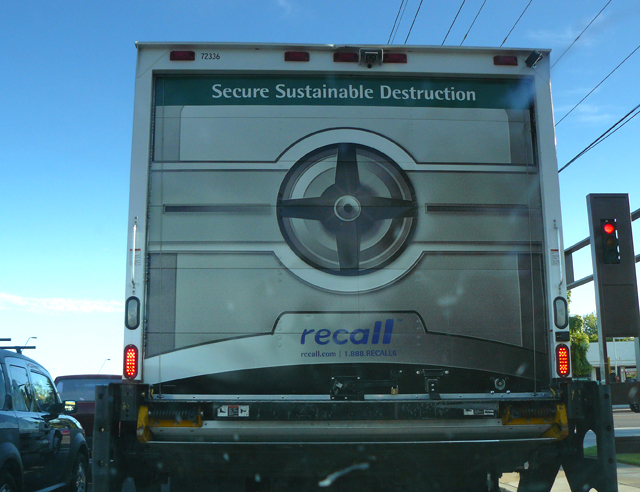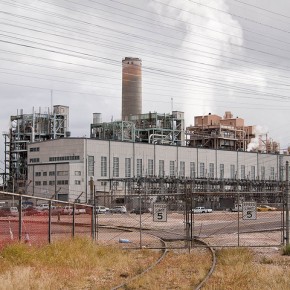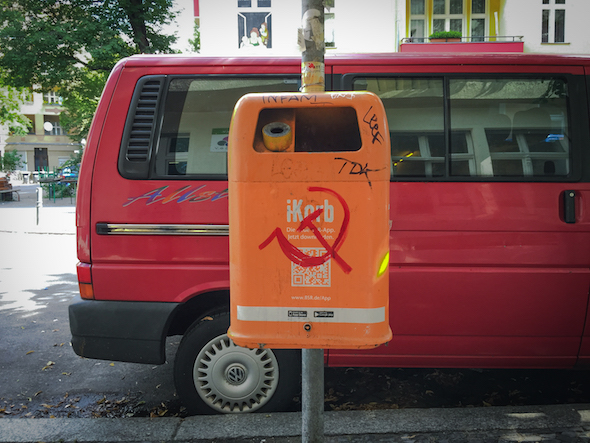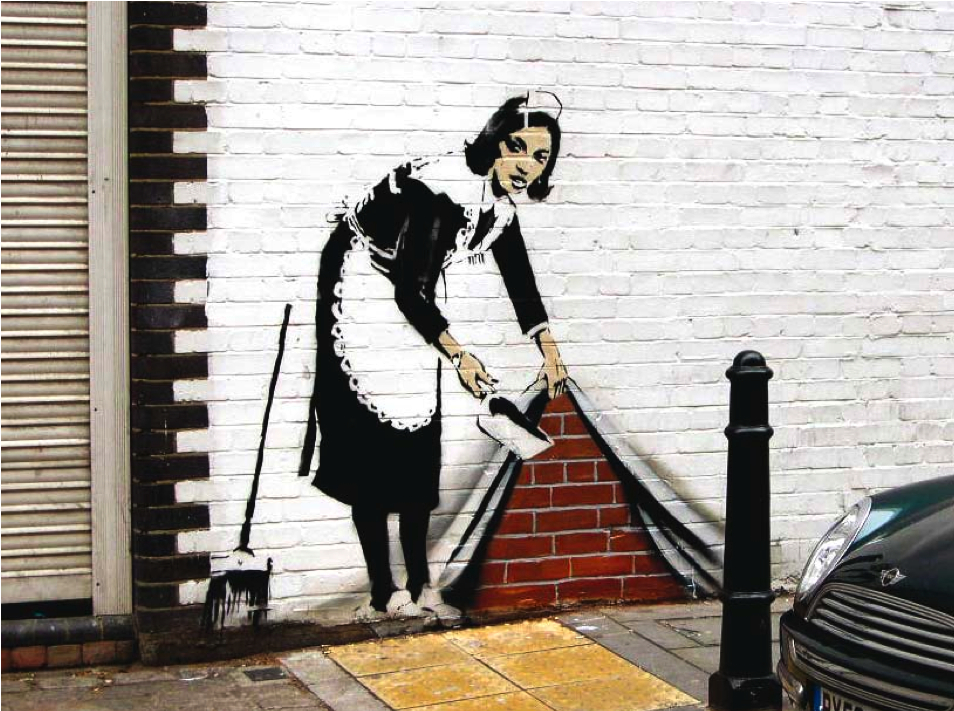It makes sense, I suppose, that the same company that files away paperwork for safekeeping would also be in the business of destroying it safely. But when I found myself in traffic behind a truck touting the firm Recall‘s “Secure Sustainable Destruction,” I was struck by the paradoxical nature of this charge.
As anxious as we get about losing access to potentially valuable information, we are perhaps even more worried about not losing it. The more we archive, the harder it is to manage the burden of the past. It weighs on us, both literally and figuratively.
Boxes of records are heavy. But even when we consign them to the incinerator, their contents have a way of reverting from light back to matter, returning to us as the undead. That’s why the idea of “sustainable” destruction resonated so powerfully for me.
I imagine that Recall merely used the phrase to draw attention to the relative greenness of their disposal practices. Far more interesting, though, is the notion that managing a company’s files requires not only storing them until their expiration date, but making sure, after they have been purged, that they stay that way.
In a way, this is a perfect metaphor for the complicated work we do in navigating the past. Historical preservation is crucial, obviously. But so is its negative space, which we must keep clear if we wish to maintain control over the stories we tell about the passage from “was” to “is.” Although history, as Frederic Jameson declared, may be what hurts, the pain can be managed.
Photograph courtesy of the author





